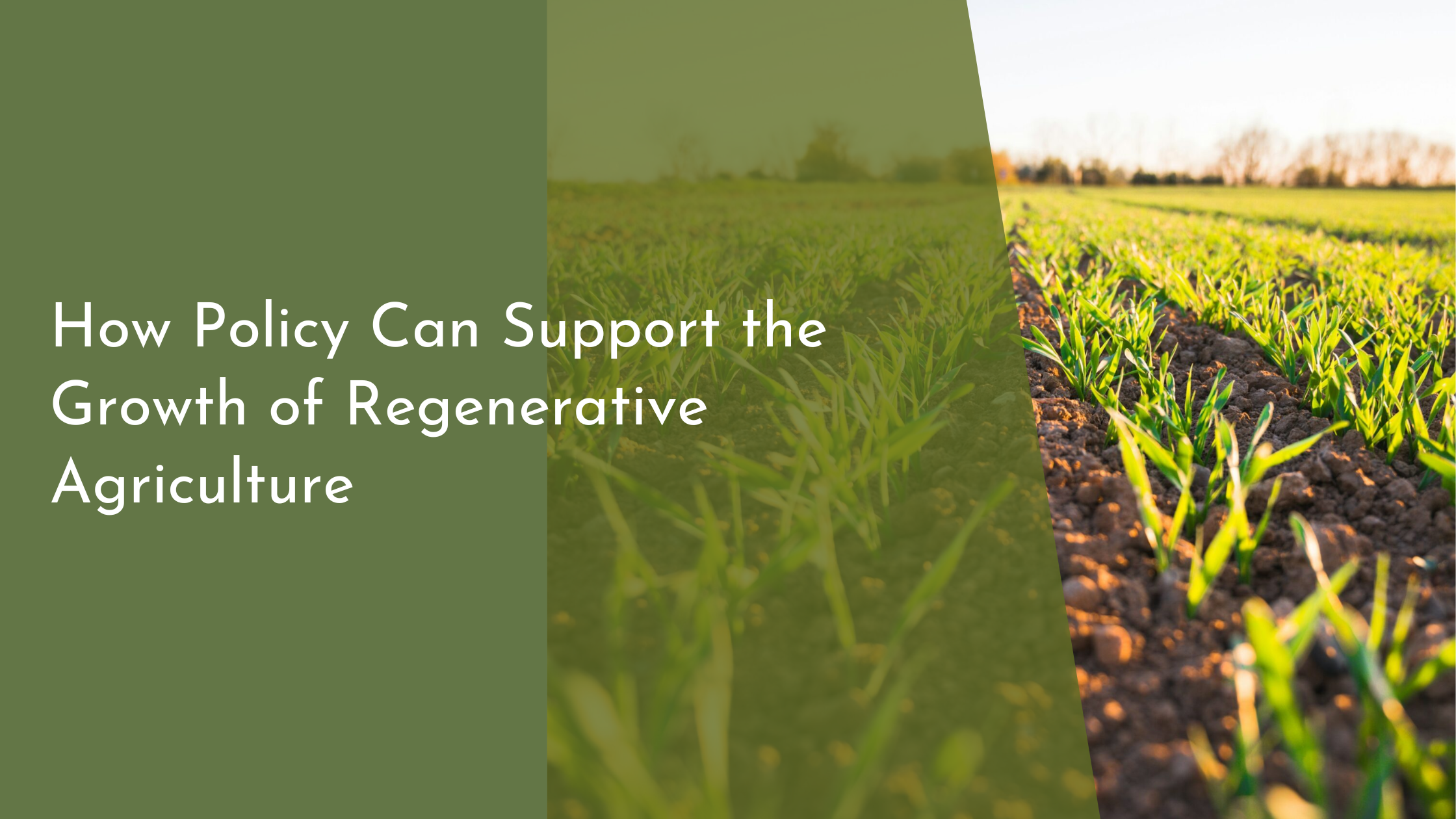How Policy Can Support the Growth of Regenerative Agriculture
Regenerative agriculture is gaining prominence as a sustainable approach to farming that prioritizes soil health, biodiversity, and ecosystem vitality. As the global agricultural landscape seeks methods to mitigate climate change impacts and enhance food security, regenerative practices stand out for their potential to revitalize farmland and offer long-term benefits. However, the widespread adoption of regenerative agriculture requires robust policy frameworks to support farmers and incentivize these transformative practices. In this article, we explore the fundamentals of regenerative agriculture, discuss key policy levers, examine how incentives can be integrated for farmer participation, and highlight examples of successful policy implementation.
Understanding Regenerative Agriculture Basics
Regenerative agriculture differs from conventional agricultural practices by focusing on the principles of ecology and the natural regeneration of resources. It aims to improve soil health, increase biodiversity, enhance the water cycle, and bolster ecosystem services. Techniques such as crop rotation, cover cropping, reduced tillage, and the integration of livestock are central to regenerative farming, each playing a role in building resilience against climate change. Advocates of regenerative agriculture emphasize its capacity to sequester carbon, reduce greenhouse gas emissions, and improve farm profitability by focusing on soil as a living entity.
The benefits of regenerative agriculture extend beyond environmental gains, offering economic and social advantages, too. By improving soil health, farmers can reduce their reliance on chemical inputs, lower production costs, and increase resilience to climatic shocks, offering a more sustainable livelihood. Moreover, regenerative practices can enhance food nutrition and safety, building trust among consumers. As awareness and scientific backing for these practices grow, there is a burgeoning interest in how policy can effectively support the transition towards this sustainable farming paradigm.
Key Policy Levers for Agricultural Support
To effectively support regenerative agriculture, policies can be designed to promote research, education, and farmer engagement. Governments can allocate funding to agricultural research institutions to explore innovative regenerative practices and assess their impact on different ecosystems. Additionally, creating educational programs that inform farmers about the benefits and methodologies of regenerative agriculture can empower them with the knowledge to transition from conventional practices.
Incentivizing regenerative practices through subsidies and grants is another crucial policy lever. Financial assistance can help offset initial transition costs for farmers and encourage the adoption of practices like cover cropping or agroforestry. Establishing certification programs for regenerative products can also create market opportunities, enabling farmers to receive premium prices for their produce. By combining these policy strategies, governments can create a supportive environment where regenerative agriculture can thrive.
Integrating Incentives for Farmer Participation
Incentives play a vital role in motivating farmers to adopt regenerative practices. While the long-term benefits of regenerative agriculture are clear, the upfront transition costs can be prohibitive for many farmers. By providing financial incentives such as tax breaks, direct payments, or cost-sharing programs for regenerative practices, policymakers can alleviate the economic burden on farmers and encourage widespread adoption.
Beyond financial incentives, creating technical support systems is crucial in assisting farmers through the transition process. Establishing regional centers for technical support and demonstration farms can offer hands-on training and peer-to-peer learning opportunities. Such support networks ensure that farmers not only have access to the latest regenerative techniques but also have a community to share experiences and challenges. This holistic approach to incentivization helps in building a resilient farming community committed to regenerative practices.
Successful Policy Implementation and Future Steps
Several regions around the world have successfully integrated policy frameworks that support regenerative agriculture. For instance, in Australia, the government has launched initiatives that offer carbon credits for practices that improve soil carbon levels, thus providing a financial incentive for farmers to adopt regenerative methods. Similarly, the European Union’s Common Agricultural Policy (CAP) includes “eco-schemes” that reward farmers for engaging in practices that benefit the environment, including those aligned with regenerative agriculture principles.
Looking forward, there is a need for continual policy evolution to ensure regenerative agriculture is scalable and sustainable. Policymakers should focus on establishing measurable goals, such as soil health improvement or carbon sequestration targets, and develop frameworks to monitor and assess the impact of regenerative practices. Collaboration between governments, private sectors, and farmers’ organizations can further drive innovations and tailor policies that suit regional agricultural needs, ensuring a future where regenerative agriculture becomes mainstream.
In conclusion, regenerative agriculture offers a promising pathway towards sustainable food systems and environmental resilience. However, to fully realize its potential, supportive policies and incentives are crucial. By understanding the fundamentals of regenerative agriculture and employing strategic policy levers, governments can facilitate a favorable environment for its growth. The successful implementation of such policies will not only benefit farmers but also contribute to global efforts to combat climate change and ensure food security. As we step into the future, fostering collaboration and continuous innovation will be key to embedding regenerative agriculture into the fabric of global farming practices.

